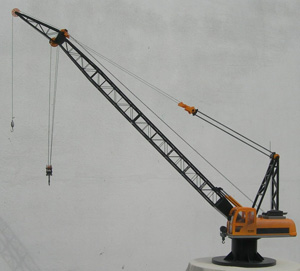Model of Refurbished Theatre – Scale 1:150
The most difficult aspect of this project was representing the blue-grey patina and diamond motifs created by the unusual galvanized steel “shingle” cladding. It would have been much easier to show on larger scale model but unfortunately the budget wouldn’t stretch to that. If you click on the Enlarge Image button you can see a close up of the effect we managed to achieve using laser-engraving and multi-coloured paint textures.
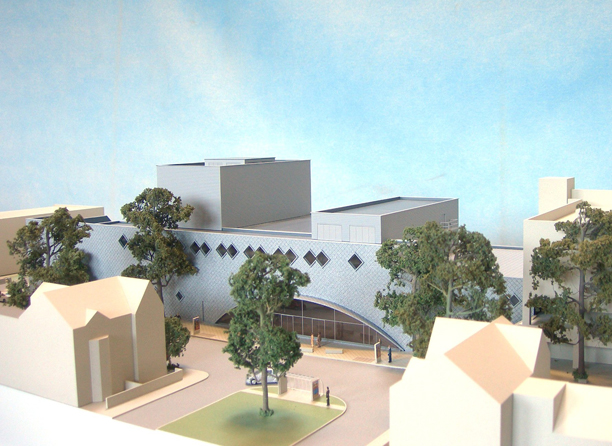
Laser-engraved Conference Folder
We used our laser cutter to engrave this company’s logo onto a batch of conference folders to be used as promotional gifts. The client opted for laser-engraving because it produces a subtle, textured finish that has a higher quality feel than conventional surface printing.

Industrial Model of Scrubbing Column – Scale 1:25
This is a model of an industrial component for the LNG gas processing industry. It’s actually called a “Scrubbing Column” and the real thing is over 25 metres tall and 3 metres wide at the base. At this scale (1:25) it’s about a metre tall. When the client commissioned the model we came up with the idea of putting it on a circular turntable base so that the model could be rotated to be viewed from all sides. We also gave it a tubular Perspex cover to tie in with the turntable and to reflect the cylindrical proportions of the model.
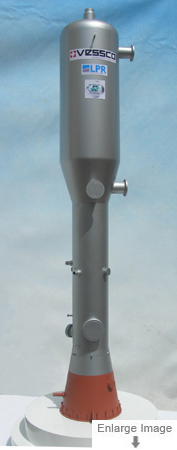
Replica of Vintage Aircraft
This is actually the final stage of a project we started in March . It’s a fibreglass replica of a crashed World War 2 seaplane, a “Vickers Supermarine Walrus” and what’s especially unusual about this model is that it is actually underwater. When the National Marine Aquarium at Plymouth decided they wanted an unusual display to put in their huge sea water tank, they avoided the obvious route of a sunken ship and went instead for this wrecked seaplane. They chose the Walrus because it had strong historical links with the area. If you visit the aquarium’s web site you can read the full story (link below). At 12 metres long and with a 14 metre wing span it was one of the biggest projects we had ever undertaken and one of the most technically demanding. Our starting point was a small set of paper plans, a photograph of a model, and some photos of the real thing at the Royal Fleet Air Arm Museum. When working out how to make it, the design process was complicated by several factors. It had to be transportable from Cardiff to Plymouth. It had to go into the aquarium through a small door three stories up the building. It had to be reassembled in a small space on top of the 9 metre deep tank. It had to sink (obviously). Divers had to be able to do the final assembly under water. And it had to be structurally sound and be able to withstand being under water for many years. Furthermore we had to design the damaged areas in a way that wouldn’t injure or trap the fish. It was a difficult project to photograph due to restricted viewing lines into the tank, but hopefully the images we’ve shown give a good indication of how the finished display looked. If you scroll down through the images below you can also get a flavour of the installation process. It was certainly a challenging but enjoyable day for us and the aquarium’s team of divers. The sharks and other fish seemed to find it pretty entertaining too.
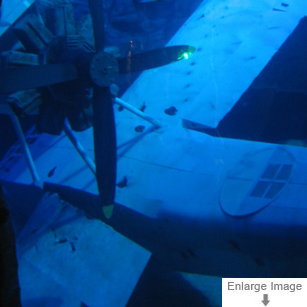
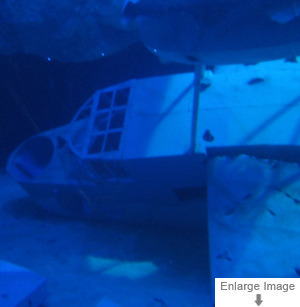
Image Gallery
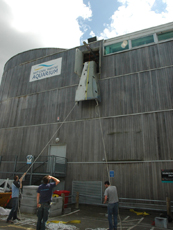
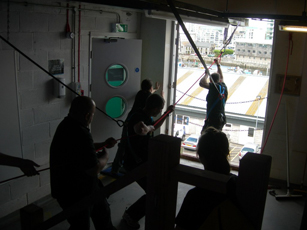
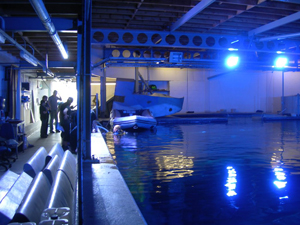
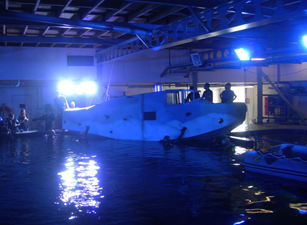
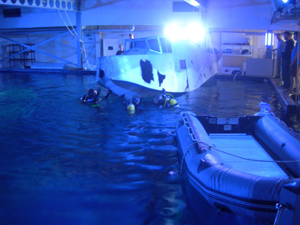
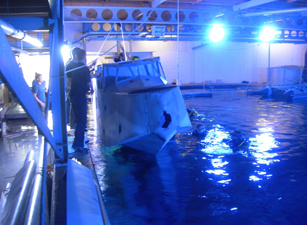
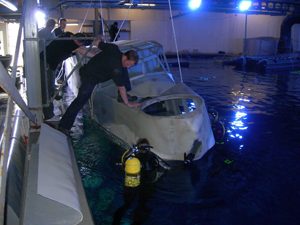
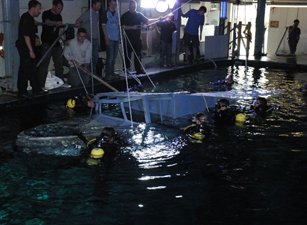
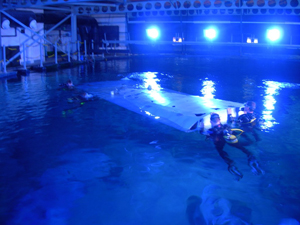
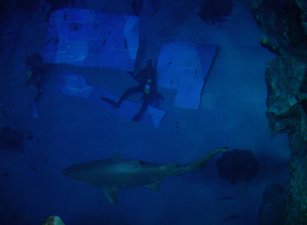
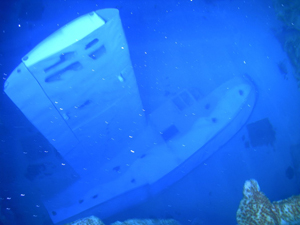
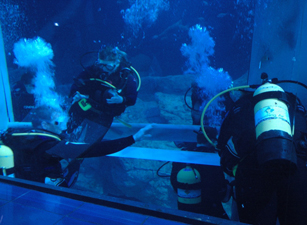
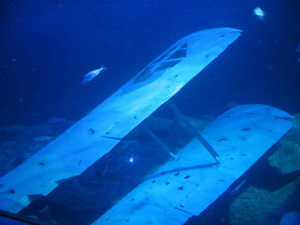
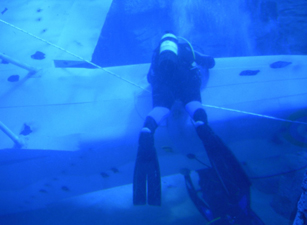
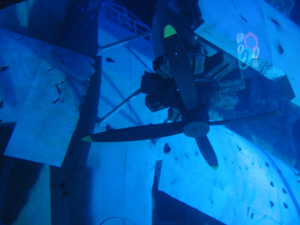
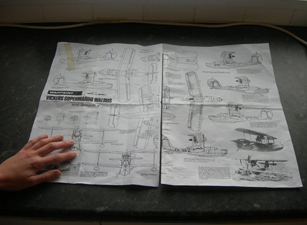
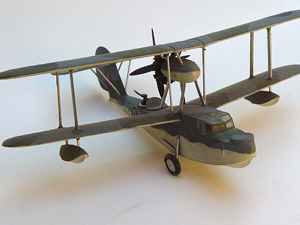
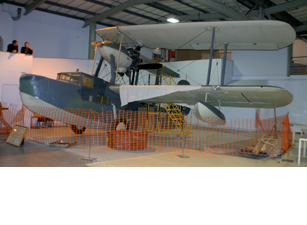
Fully Functional R/C Crane Model – Scale 1:12
The client for this model, a provider of specialist training for signalmen and crane operators, needed a fully functioning crane model to use during his training sessions but the right type of crane just wasn’t available on the market. His solution was to ask us to convert an off-the-shelf toy into a purpose-built machine. This involved scrapping about 70% of the original model, adapting the radio controlled motors to perform new functions, adding a completely new winch, new main boom, new pulleys, new ‘A’ frame, new hook, new base (it previously had caterpillar tracks), and a new power supply plus a few other cosmetic alterations. In fact, about the only thing we haven’t changed is the driver’s cabin. The model is now fixed to a desk in their training rooms and used on a weekly basis for tests and as a teaching aid. It’s definitely not a toy (although we did have a lot of fun “testing” it before it left our workshops).
